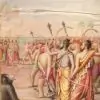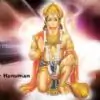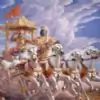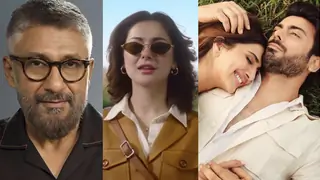Originally posted by: Chandraketu
Quick question - what was the period in history that Kamban lived/wrote his Ramayan? I know that Tulsidas wrote his in the 16th century, but does anyone know when the various versions of the Ramayan (other than Valmiki's) were written?
I posted it ones i am copying from that post😃
There are three hundred to as many as thousands of versions of the RAMAYANA are known to exist. The oldest version is that of Valmiki in shanskrit . Some other versions are called Ananndha RAmayaNam , AdhyAtma RamayaNam , Kambha RamAyaNam , AruNAchala Kavi's Rama nAtakam , Bhavabhuthi's MahAveera Charitham ( 700-740 AD ), and Swami Desikan's ( 1268-1369 AD ) Raghu Veera Gadhyam.
In almost all of North India, the Tulsidas Ramayana, also known as the Ramcharitmanasa, is the most popular. Goswami Tulsidas rewrote the Valmiki version in Hindi in about 1574, changing it somewhat to emphasize Rama as an avatara (incarnation) of Vishnu. Another notable change was that Sita had a duplicate(chhaya sita), who was kidnapped while Sita remained safe.
The Kamban Ramayana is popular in the state of Tamil Nadu, and is of course written in Tamil. Segments of the story were changed to better reflect Tamil ideas, including Ravana not being as cruel to Sita.
These are just some of the versions and many more do exist.
1) North India - The RAMCHARITRAMANAS written by Tulsidas in the 16th century is the Ramayana version popular in North India.
2)JAMMU AND KASHMIR - The Kashmiri "Ramavatara Charita" was written in 19th century.
3)PANJAB- The Ramavatara written in 17th century by Guru Gobind Singh.
4)GUJRAT-The Tulsi-krita Ramayana is a Gujarati adaptation of Tulisdas' Ramayana in 17th century by the poet Premanand.
5) MAHARASHTRA- The Marathi "Bhavartha Ramayana" written by Eknath in the 16th century. There is also reference of a Ramayana being translated into old Marathi during the 12th or 13th century.
6)ASSAM-The Assamese "Katha Ramayana" or "Kotha Ramayana" in 15th century by Madhava Kandali.
7)BENGAL- - The Bengali "Krittivas Ramayan" written by poet Krittivas in 15th century.
8)ORISSHA- The Oriya "Balramadasa Ramayana" was adapted by Balarama Das in the 16th century.
9)AANDHRA PRADESH- The "Sri Ranganatha Ramayana" was adapted by Buddha Reddy and is the Telugu version of the Ramayana
10)KARNATAKA- The KANNADA versions of the Ramayana ' the "Kumudendu Ramayana" (a jain version), written in 13th century and the "Kumara-Valmiki Torave Ramayana", written in the 16th century. There is another version titled "Ramachandra Charita Purana" written by Nagachandra during the 13th century.
11)TAMIL NADU-The Tamil "KAMBARAMAYANAM", a popular version, written by poet Kamban in the 12th century.
12)KERALA- The Malyalan "Adhyatma Ramayanam Kilipattu" written by Thunchththu Ezhuthachan in the 16th century.
An URDU version is called the "Pothi Ramayana" and was written in 17th century by Chak bast
OUTSIDE INDIA
In Thailand, the Ramayana has become the national epic, in the form of the Ramakian. Often performed as a play with elaborate masks and costumes, it details the story of Rama's battle against the giant demon king Totsakan. It differs from the Valmiki version mostly in names, but there are a few plot differences, including Sita giving birth to only one son, who is magically duplicated by the magician and hermit known in India as Valmiki. Also, almost all religious significance is removed from the story, as the Thai people are mostly Theravada Buddhists, and at most would say that Rama was Buddha in a former life.
folk and tribal versions
Besides the literary works and rework of Ramayana, there are many folk versions too. These folk versions don't have any written or documented versions. They are preserved from generations to generation and add a very interesting flavour to story of Ramayana.
One the most interesting folk version is the popular Mappila Ramayana, part of Mappillapttu, a genre of popular folk singing amongst the Muslims of Kerala and Lakshadweep. Being of Muslim origin, the hero of this story is a sultan. There are no major changes in the names of characters except for that of Rama's which is changed to 'Laman'. The language and the imagery projected in the Mappilapattu are in accordance with the social fabric of the earlier Muslim community.
There are many tribal versions of Ramayana found in India. Each of them adding further more twist and flavours to the story of Ramayana. The tribal versions, in particular are least known to the modern world and are on the verge of being destroyed under influence of rapidly expanding globalization.
























